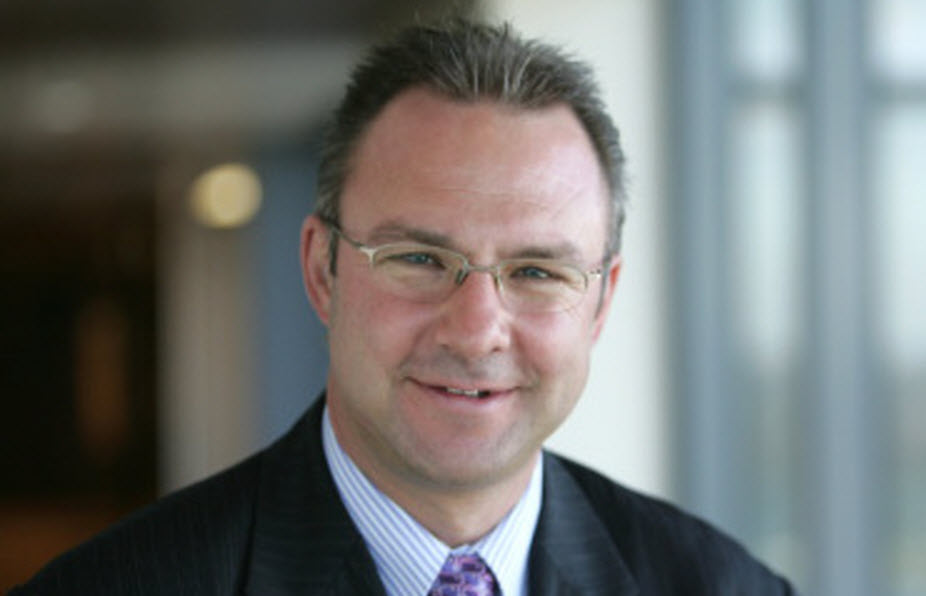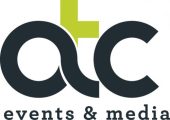Stuart Elliott On The Problems In HR, The Rise Of Contingent And Building The Workforce Of 2020

As the son of two teachers with a passion for learning, Stuart Elliott always knew that educating others would be a fundamental part of his life. What he never anticipated was that rather than teaching children in the confines of a classroom, he would make a career out of teaching adults within the banking and finance space.
After undertaking a 6 week contract at Suncorp following over a decade heading up People Strategy at Westpac, Stuart was offered a permanent role at the Insurance and Banking organisation. Finding that he just didn’t ‘fit’ as a perm worker who wanted true flexibility and autonomy, he himself became a contingent worker. Now the Executive Manager of Workforce Strategy & Design, Stuart is using his passion for learning and discovery to help the organisation navigate the challenges ahead.
This week, Stuart talked to ATC about the problems he sees with traditional organisational structures, the global shift in the workforce, his experience as a contingent worker, and what Suncorp is doing to build the workforce of 2020.

The Problem With Traditional Workforce Structures
The Past – repeatable, reliable and predictable
It’s easier to pretend that the world isn’t changing as quickly and profoundly as it is. Largely, the way we’ve structured organisations is a hangover from the Industrial Revolution; ‘The Factory’. If you think of factories – whether it was building furniture or building machinery – we want this to be repeatable, reliable and predictable.Factories were established almost the same way the military was established. Get groups in manageable chunks, doing like functions, and have them work in command and controlled environments, because that’s the easiest way to get the outcome that you want.
If I arrange people by like skills, and put them in groups and direct their activity, I too can have a repeatable, reliable and predictable outcome.
The Future – unpredictable, unreliable and inconsistent
The issue we have is that the world has changed. We’re seeing work and technology create an environment that is unpredictable, that is unreliable and inconsistent.
If you apply past methodologies of thinking in terms of the workforce, you’re not going to be able to solve the problems of the future.
However, it’s much easier to pretend the world hasn’t changed. It’s much easier to have leaders who just have job description documents, they have KPI’s for their teams and they continue to have rules and policies that treat everyone the same. There’s no denying for organisations that it’s much easier to pretend the world hasn’t changed. They still want to exercise out-dated command and control management. It is easier, cheaper and almost definitely going to ensure that they fail!
The State Of The Contingent Workforce
One of the issues around the contingent and perm workforces is the issue of flexibility, as well as the capacity to be self-directed. If organisations can get their act in order, and create environments that do not have the level of structure and do not treat the workforce as a homogenous population – then there’s no reason why organisations would see a rising level of contingent workers.
Why Contingent Work Is Rising
The rise of the contingent workforce is a result of businesses and organisations not willing to change the way in which they work.
Stuart’s Experience As A Contingent Worker
If I want to get what I want out of a work arrangement, I can’t do it. No one will employ me on the conditions that I want, but funnily enough they’ll employ me as a contractor. I’ve worked at Suncorp for more than four years after having starting on a six week contract. My level of loyalty and engagement is phenomenal, but they could not employ me as a permanent worker because I don’t fit.
Expected Contingent Workforce in 2020
It will definitely be 50% or higher if organisations continue to work on the old world paradigm; continue to look at rules; and, continue to look at policies that assume the workforce is one way. More and more people don’t want that one way, and at the moment the only way that organisations can hire people in the way that they want is under a contingent arrangement.
What Recruiters Can Do Now To Prepare For The Future Workforce
Recruiters are your salespeople of the organisation from an employment branding perspective, they go out with the features and benefits of a role and end up talking about these things, without looking back and feeling as if they can question it.
Turning Recruitment Into Talent Management
Part of the issue with recruitment is moving it from a recruitment function to a talent acquisition function, who fundamentally ask the question “what is the capability that we want to bring to this organisation?”, and “how do I work with this business to create a relationship between an employer and an employee that works for both?”.
Throw out the rules. If that means that the recruiter has to say “we want you, what are the conditions that we need to get you, how do we make that work?
Blurring The Lines Between Contingent And Permanent
One of the issues I have with organisations at the moment, is that the contingent workforce comes in a very different channel to the permanent workforce, which means our recruitment function will be bypassed by 50% of our people. That doesn’t make sense to me. Talent acquisition is talent acquisition and candidates should go through the same funnel. That function must be much more highly skilled at understanding what they need to do to get capabilities into the organisation.
The Role of HR In Changing Organizational Culture
HR is usually the largest barriers to change. The C-suite want people in the organisation who can do the job. The rules under which those people are brought in are the domain of HR, and HR is complicent in ensuring that the old world mentality is maintained. It’s really hard to go back and say “none of our policies make sense, none of our frameworks make sense”.
We have performance structures, we have succession plans and career development plans, and all of those things really speak to a simple permanent workforce. Our contingent workforce doesn’t participate in any of these things.
While HR holds onto the preciousness of those frameworks, policies, rules and processes, you’re not going to have the answer.
How HR Can Get C-Suite Support
The C-suite want change. They want the capability and to pay for what they use. They want to convert their fixed costs to variable costs. They’re doing it already with their technology, they’re doing it already in their property. The last vestige of bureaucracy is around their people, and that’s being protected by human resources. HR have to have a different way of working in this environment so we get these capabilities. They’re going to get the support of the C-suite if they can show it will allow them to variabilise costs, to make sure they can bring in the right capabilities into the organisation at the right time and deliver better outcomes.
What Suncorp Is Doing Differently?
Test Environment
What we’ve set up is a testing learning environment, which is 12 different hypothesis we want to test. These are things like ‘our current hierarchy and pay systems aren’t working so lets find a part of the business that wants to run under a holacracy, or self managed teams, or self managed rosters’. We do these in a controlled environment, we have a hypothesis around what we want to learn and we’re trying these things across various parts of the business.
The Work At Home Hub Experiment
We started with 22 people on a work at home hub, where we picked up a particular group and told them they could work at home, if you’re not going to be there you arrange with someone else to pick up your calls, you meet once a month with your local hub. We’ve gone from 22 to almost 400 at the end of this year. They have the highest rates of engagement, have the best performance and the lowest turnover.
Once you test these things and see the results you can look at where it can be applied. What you can’t do is just say “let’s open the doors and let people do what they want to do”- that’s a risk.
How Suncorp Is Building The Workforce Of 2020
Test, learn, fail quickly and pivot – this is what we’re trying in a range of business units. We’re hoping that it will allow us, by 2017, to understand where are things we want to really push, and where are the things that aren’t going to work.
This means by 2020 we’ll have radically different workforce.
Stuart’s Own Journey, Passions And Why He Loves What He Does
I grew up the son of two teachers and I always saw myself going into teaching, I loved knowledge, I loved learning. What I’ve found is that I’ve done as much teaching in my role within organisations that I would have done in schools, but I’m teaching adults. I’m learning as I’m teaching. I never thought I’d do it within the confines of an organisation.
To learn more about hiring and building the workforce of the future, join Stuart at #CWF15 in Sydney on 22-23 September. Stuart will be presenting a session on changing cultures to build a balanced workforce that creates optimum results for all stakeholders. To participate, register your ticket for the event here.
Related articles
Leave a Reply
Sign up to our newsletter
Get a weekly digest on the latest in Talent Acquisition.
Deliver this goodness to my inbox!


